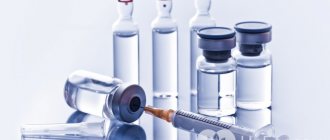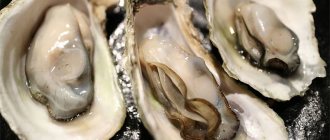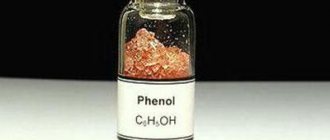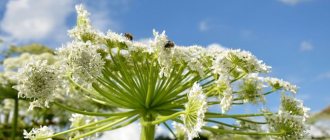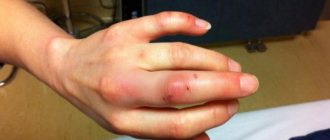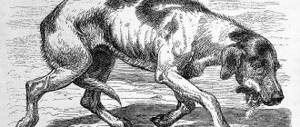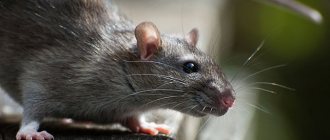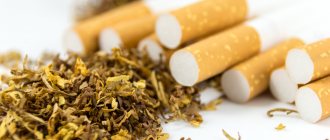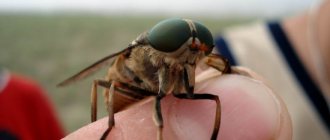The beginning of the fruit season is always accompanied by various insects. When picking fruits, you should be careful not to get a wasp sting. After all, the entry of poison into the human body can cause various manifestations. Usually there is severe pain, the bite site begins to burn and swell. Usually such manifestations disappear within a few hours. Depending on the part of the body where the wasp stung, swelling may not go away for several days. In the case of bites in several places, care must be taken to ensure that the body does not develop an allergic reaction to the poison that has entered the body. A wasp sting causes swelling and redness; we’ll look into what to do in such cases further.
The season when bees and wasps attack equally is in July-August. The injected toxic substance may have different effects in each individual case. For some it is just pain and slight swelling, for others it is a severe allergic reaction. In any case, it is painful and unpleasant. Therefore, it is very important to know what to do if bitten by a wasp and act immediately.
Why are wasps dangerous and should you be afraid of them?
Wasps belong to the order of stalked bellies, and like many insects, they appear outside with the arrival of warmer weather. You can meet them both in the city and outside it; they can settle in a person’s home. They attack only when they sense danger or aggression towards them. By stinging, it injects a small amount of poison into the human body; it is so small that it cannot provoke serious poisoning. You feel a sharp pain from the sting, redness and slight swelling are observed. Women, children, allergy sufferers and people with weakened immune systems show higher sensitivity to the poison. The following symptoms may be observed:
- Pain and burning after a bite
- Redness of the affected area
- Swelling
- A rash may appear
- Increased body temperature
- Headache
- Attacks of nausea and vomiting
- Body spasms
Many biologically active substances enter the human body as part of the poison.
Histamine is a substance that promotes swelling and a general allergic reaction to the poison. Interesting fact: According to research, paper wasps can distinguish the faces of their relatives.
This ability develops only in social species of wasps, which maintain a strict hierarchy in families. Wasps living alone or in simple families do not know how to do this. Substances included in the poison:
- Acetylcholine is a neurotransmitter necessary for the normal transmission of nerve impulses.
- Phospholipases - provokes a local inflammatory reaction.
- Hyaluronidase - increases the permeability of tissues and capillaries.
- Kinins are proteins that dilate blood vessels, increase vascular permeability and are responsible for pain.
- Amino acids are powerful allergens.
Characteristic symptoms
After a sting, certain signs are noticeable on the body:
- swelling;
- red-pink tint of the epidermis;
- skin itching;
- throbbing pain;
- when the eyelid is stung, the facial tissue becomes very swollen, the eyes are practically invisible due to noticeable swelling, and hemorrhage often occurs in the conjunctival area;
- in children and women, symptoms from an insect bite are more acute;
- a sting on the tongue causes severe swelling not only of the affected area, but also of the mucous membranes of the mouth and larynx, and the person suffocates.
With increased sensitization of the body, anaphylactic reactions develop:
- pronounced swelling;
- redness of the affected area;
- pale skin;
- nausea;
- severe itching;
- the victim wheezes, an attack of suffocation is observed;
- hemorrhage in the eye area;
- loss of consciousness;
- soreness in the chest and abdominal area;
- a sharp decrease or increase in pressure;
- heart rhythm failure.
Find out the technical characteristics of the insect and rodent repellent pest repelling aid, as well as the rules for using the device.
Read about how to make effective poison for mice at home and how to use it on this page.
What to do if you are bitten by a wasp
- If the sting remains, remove it with tweezers and suck out the poison if possible.
- Treat the bite site with anything containing acid (a slice of apple, orange or lemon, sour berry or citric acid).
- Apply something cold to the wound (there is always something in the freezer, ideally ice).
- Take anything for allergies (Suprastin, Zodak, Cetrin, Advantan ointment or Fenistil gel).
- Treat the affected area with an antibacterial agent (antiseptic brilliant green or hydrogen peroxide, or vodka in extreme cases). Do not take alcohol inside!!!
People with high sensitivity to poison usually carry an auto-injector with them. The active substance is most often adrenaline; the marked side is pressed firmly against the inner thigh. And we inject directly through the clothes for 5 seconds.
What to apply to the bite area
So what to apply so that the pain disappears faster, the swelling goes away and the redness in the bite area disappears. The pharmaceutical industry provides a wide selection of topical agents. Pharmacy allergy medications include hormonal and non-hormonal, and are produced in various dosage forms:
- Ointments have a fatty base and form a film under which the active ingredients completely penetrate the skin (Protopic, Zinc ointment).
- The creams have a fatty base, but do not form a film. (Gimtan - N, Elokom, Skin-cap, Afloderm).
- Gels are water-based and have a drying and cooling effect. (Fenistil, Soventol, Actovegin)
Folk remedies for wasp stings
- Parsley root, a slice of lemon, and a cut clove of garlic will help you. Mash the onion pulp and plantain leaf until juice appears (rinse the leaf with water).
- Aspirin will numb the bite, take it orally or grind it, mix it with water and treat the wound.
- Lotions with lemon juice or a weak solution of 9% vinegar (1 - 2 teaspoons per half glass of water).
- Kefir, sour cream and natural yogurt will relieve itching and inflammation.
- Tea bags or tea infusion will soften and remove swelling.
- Tea tree or clove oil has antibacterial and anti-inflammatory effects.
- Son, what's wrong with your face? — A wasp sat on him. - So what, she bit you like that??? - No, her dad killed her right away with a shovel.
First aid kit items:
- Fenistil gel will reduce itching and pain, stop the development of edema.
- Menovazin is a cheap anesthetic that will relieve pain and itching.
- Soventol is a good ointment for pain relief.
- Advantan is a strong gel that stops the development of allergies and swelling.
When should you immediately seek medical help?
If a child has received a wasp sting, there is no need to think about how to remove the tumor on your own. You need to urgently seek medical help, because the baby’s body can respond with an instant allergic reaction, even if there is no predisposition to allergies. You should not take measures on your own even when a wasp has stung an elderly person or there are more than 10 bites on the victim’s body.
Taking an antihistamine after receiving a dose of wasp venom should bring the desired relief, but if this does not happen and the symptoms continue to appear, you should not postpone a visit to the doctor. The specialist certainly knows how to treat a wasp sting with such complications. And he will be able to choose an effective course of treatment.
What to do if a wasp stings a child
The processing is no different from that described above, only the means differ.
- We wash the affected area with a solution of vinegar (a teaspoon in half a glass of water), or prepare a paste of soda and water and apply it for 10 minutes.
- Soda lotions, or a weak pink solution of potassium permanganate.
- Clove oil, star balm (beware of contact with eyes).
- Products based on calendula or arnica.
A large line of products has been produced for children in the form of ointments, lotions, balms, here are some of them:
- Gardex Baby - can be used from 12 months.
- Mosquitall – children's series.
- Balm Rescuer can be used from any age.
- Apply Valocordin or Corvalol to the bite area and it will itch less.
Actions to take if you are bitten on the leg
What to do if you swallow a wasp
When a wasp stings on the leg, just as it stings on the arm, healthy people do not show signs of severe allergies. General intoxication of the body can only be observed in cases of mass attack of striped insects. In such cases, even death is possible, it all depends on the human body. One insect can only kill people with severe allergies, for whom any dose can end badly. At the same time, bites to the face, larynx and neck are considered the most dangerous for them, since swelling of these parts of the body provokes suffocation.
Important! Allergies begin to develop only after several attacks. If a wasp bites a person for the first time, the body is not able to experience intoxication. The subsequent entry of poison into the blood will be perceived more difficult.
To save yourself and others from negative consequences, you should take the measures described above:
- remove the sting, if present;
- prevent the poison from spreading throughout the body and causing allergies;
- relieve pain and reduce swelling;
- To prevent a strong decrease in pressure in the arteries, with the development of urticaria, for this you need to give Cordiamine in a dosage of 20-25 drops.
Useful tips
- when stung by a wasp, you should not wave your arms, try to kill the insect, or destroy the nest if it is nearby;
- sudden movements, fear, attempts to attack a wasp’s home provoke an attack of aggression in insects. If the behavior is incorrect, a whole swarm may attack the victim. The consequences are severe - in most cases, death;
- After being stung, you need to pull yourself together, try not to panic, and calmly move away from the scene. If a wasp is circling nearby or crawling on clothes, you should not wave your arms; it is better to shake off the insect with a stick, ruler, or branch;
- if an incident happened to the hostess while preparing compotes or jam, you need to cover the bowl with the sweet mass/fruit on the table, carefully guide the wasp out of the open window with a towel or wide rag;
- Many people find it difficult to follow these rules, but there is no other way: panic and waving their arms often provoke new bites.
Actions when bitten
It is impossible not to notice the bite. After the poison enters, a pain resembling a burn is felt. This way you can find the bite site and provide first aid, without the participation of doctors. If the attack was multiple, the victim should be immediately taken to a medical facility. In the event of an attack by one individual, you can take action yourself.
Wasp sting
Before providing assistance, the wound should be examined. When a bee stings, there will be a stinger that needs to be removed. The wasp does not leave a sting. To treat the stung area you will need:
- A sharp object such as a needle, tweezers or something else to remove the sting, if any;
- Disinfectant for treating the affected area: brilliant green, iodine, alcohol, peroxide, soap or furatsilin solution;
- Antihistamine - supradin, claritin, erius or others available at hand.
You should follow the algorithm showing what to do if you are stung by a wasp:
- The first step is to treat the affected area of the body. It is washed with water, washing away the contamination and residual amount of poison on the surface;
- Be sure to wash your hands and disinfect the tools you use;
- Next, the sting is carefully removed if it was a bee. This is how the poison stops spreading throughout the body;
- Treat the bite site with a disinfectant;
- Apply a cold compress to the affected part;
- Take an antihistamine, regardless of the presence of allergies and allergic manifestations.
After an insect attack, you need to spend some time lying down, at least until the painful shock passes. During this time, you should drink a lot of water to speed up the swelling. It is recommended to drink very sweet hot tea or other sweet drink. As a rule, all manifestations disappear within a few hours if it is a leg or arm. When the bite site is the eye, lip or other part of the face, swelling can last from several hours to several days.
The most dangerous place for a wasp bite is the neck. In this case, the likelihood of increasing all symptoms increases.
How to avoid becoming a victim of a wasp
If you are careful and act according to certain rules, you can not only avoid an insect attack, but also minimize the consequences of its attack:
- When in the forest or in nature, you should not climb and stir up the nests of any insects, not just wasps
- If a wasp is circling nearby, then there is no need to wave your arms, because this will certainly provoke an attack of aggression and a defensive reaction in the insect. You should also not hunt wasps or try to kill them. The most rational solution is to calmly move away from the place where the wasp is circling.
If you have to deal with wasp stings, you need to immediately take measures that can be done at home. If the allergy does not go away, you should call a doctor. A wasp sting can be dangerous, so it should never be ignored, much less taken lightly.
Conclusions from Tikhon: It is impossible to predict a wasp sting, unless of course you go into their home yourself. But if you are stung, do not panic, the main thing is to do everything in a timely manner.
If you have experience solving this problem, share it in the comments below. Perhaps he will help someone make the right decision.
Health to you and your loved ones.
Anaphylactic shock
Particular attention should be paid to a life-threatening manifestation of allergies - anaphylactic shock. With anaphylaxis, swelling increases within minutes after a wasp sting, spreads to the neck and leads to suffocation.
If swelling rapidly increases and the condition worsens, you must immediately call an ambulance, explaining the situation in detail. First aid involves the administration of adrenaline and hydrocortisone, which is provided by health workers.
Fact. People who are aware of their predisposition to an anaphylactic reaction carry auto-injectors or syringe pens with them. These are devices that inject a single dose of adrenaline or epinephrine into the muscle.
Why do wasps sting?
Only females are capable of biting. The reasons for this behavior can be very different:
- Wasps instinctively defend the territory near the nest, and the slightest threat can cause a massive attack from them. No wonder there is a figurative expression: “to disturb a hornet’s nest,” meaning provoking collective aggression.
- A sharp increase in the number of young and aggressive females at the end of summer, fighting for food resources.
- A reaction to a threat that a wasp may experience when attempting to physically get rid of its intrusive presence.
Prevention
If a wasp bites an allergic person, a pregnant woman or a child, the reaction can be unpredictable. It is better to avoid encounters with insects, but this is difficult at the end of summer, when hymenoptera attack houses, cottages and garden plots. If a nest appears near the house, it must be removed. You can entrust the work to a specialist; they remove small nests themselves, and be sure to use protective clothing, and burn the nest.
Insecticides will help get rid of insects. Among the effective means are “Tetrix”, “Aktara”. Precautionary measures in nature include:
- do not walk barefoot;
- do not use strong-smelling cosmetics and perfumes;
- wear a hat and gloves when working in the garden;
- Take special care when eating outdoors and keep food items closed.
Knowing about the body’s individual reaction to hymenoptera venom, it is better to keep antihistamines with you. An encounter with an insect can occur at the most inopportune moment, and to prevent the sting from causing serious consequences, immediately take the maximum permissible dose of an antiallergic drug.
Dear readers of the 1MedHelp website, if you still have questions on this topic, we will be happy to answer them. Leave your reviews, comments, share stories of how you experienced a similar trauma and successfully dealt with the consequences! Your life experience may be useful to other readers.
Special cases
For some of us, a wasp sting, even a single one, can be fatal. Increased threat to:
- little children,
- pregnant women,
- allergy sufferers - people with an acute reaction to the venom of insects (or in particular only wasps - these constitute approximately 2% of all humanity).
Therefore, emergency assistance and calling an ambulance are necessary if the wasps have attacked any of the three representatives of the risk group, even if the symptoms are not yet threatening. And even more so if you notice such dangerous signs as:
- rash, especially developing into large blisters (the appearance of a rash is generally a sign of a tendency to be allergic to this toxin),
- the victim’s complaints of lack of air, inability to breathe (suffocation) - this occurs due to swelling of the larynx,
- severe swelling of the face (especially lips and eyelids), as well as hands,
- sudden change in facial skin color: redness and then pallor,
- a sudden rapid drop in pressure, loss of consciousness, coma - all these are signs of a serious threat - anaphylactic shock, which can be fatal.
Regarding allergies to wasp stings, you need to know that:
- With each subsequent case of a bite, the allergy, if any, will only intensify, therefore, if the very fact of having such a reaction in the past is known, help with a new bite should be immediate!
- If the father or mother (and especially both parents) had an allergy, then there is a very high probability that the child will have the same problem, since this feature is inherited.
- If an allergy sufferer also has asthmatic manifestations (asthmatic bronchitis, bronchial asthma), heart disease or diabetes, he is doubly at risk!
